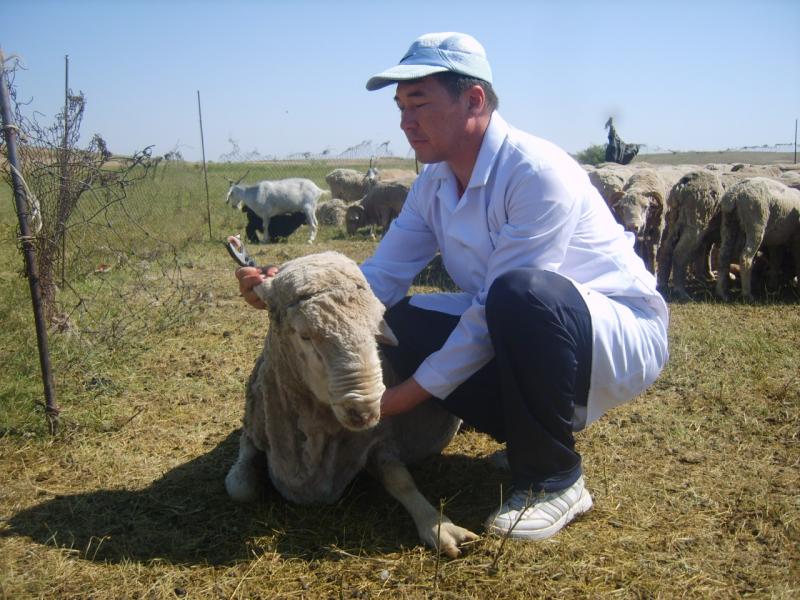
Analysts assure that in recent years the consumption of mutton in the world is growing. Already in 2027 it is forecasted that the production of meat will increase by 15%, among which there is a share of lamb. According to Kazakh experts, it is high time to increase the number of livestock and to promote the domestic mutton on the export market. In an interview with World of NAN, Nurzhan Zhumadillayev, a candidate of agricultural sciences and executive director of the Sheep Breeding and Wool and Meat Productivity Chambers, talked about how to achieve this goal.
Nurzhan Kudaibergenovich, what is is the situation in sheep breeding in Kazakhstan right now?
We are now witnessing a boom in the industry. We see a huge interest of citizens to the indigenous national business. But I must say that the sheep breeding in our country has gone through several stages of development - Soviet times, post-perestroika years and establishment of Kazakhstan. In Soviet times the number of sheep of various breeds reached 36 million. In 1993 there was a downward tendency in number of heads. But the main blow on industry came in formative years. We lost a lot of breeding and highly productive livestock. Especially meat, fine-wool and meat breeds. The number fell by half! And only after 2000 the situation in the agroindustrial complex stabilized. Reanimation of the industry received attention. Now there are about 18 million sheep in the country.
You noted a great interest in sheep breeding now. Is it connected to the profitability of this kind of animal breeding?
Of course it is. I would call sheep breeding profitable. It is profitable, because, first of all, it is pasture-based. The cost of fodder is small. Most of the time the animals are on the pasture. Minimal preparation of the forage is required. Only as an insurance stockpile in case of shortage of fodder. The sheep need supplementary feeding only in wintertime. If there is a loss, the owner suffers only a small loss per head. And if you keep cattle, and even pedigree cattle, it will be a huge loss. That is why it is important for us to retain the interest to sheep breeding, to increase the number of cattle.
How does the State subsidize the industry?
As far as I know the sector is not badly financed. There are subsidies for each kg of meat produced. On the domestic market it is 100 tenge, on the export market it is about 200 tenge. Here I would like to note that the rules for subsidies are constantly changing. And this prevents farmers from planning their work. There are subsidies for selection and breeding work. About 4-4,500 tenge per head. With pedigree breeding improvement 2 thousand tenge per each head of the sow. Purchases of breeding animals are subsidized - bulls and rams-producers, 15 thousand tenge per head. Breeding centers used to be subsidized for insemination of marketable livestock. Wool was also subsidized. Now they have been removed.
Nurzhan Kudaibergenovich, what would you say about wool processing? Farmers complain that they have to throw it away. Although there used to be factories that processed local raw materials.
I am aware of the problem. All the existing plants have either closed or are idle. Unfortunately, in today's realities, processing turned out to be unprofitable. Let me try to explain. In sheep breeding a mother produces one or two lambs and gives 3-4 kg of wool. Today, the maximum wool is paid for about 350 tenge. For 3 kg we get 1200 tenge, whereas one lamb costs about 30-35 thousand tenge. If we work for fineness, for wool, then we allow the sheep stock to be crushed. The thinner the wool, the more delicate the animal. Shredding the breeding stock will also affect the litter - lambs. They will have to be kept and fed longer to bring them to a certain weight. In Soviet times there was a huge demand for wool fabrics, the light industry flourished. That's not the case now. Neither is there a differentiated purchase. All wool is sold at one price, it is not profitable. Wool should now be seen simply as an additional source of income, not as a major stake. Again, meat sheep farming is the priority. Even sheep breeding in Australia, which is famous for its wool figures, is now focused on the meat direction.
As far as we know the concept of sheep breeding development is worked out in Kazakhstan. What goals does this program set?
Yes, the concept is adopted. It was initiated by the national association of sheep breeders of Kazakhstan Shopan ata. The goals are ambitious, but achievable. Principal - increase of income of villagers through occupation by sheep breeding. The developers expect to increase the number of sheep up to 36 million by 2030. State support will help open new commodity farms, breeding farms and processing enterprises. A separate topic is the disclosure of export potential. Especially since beef consumption is decreasing in the world and demand for mutton is growing. Now we need to work for export, which brings good profits and to breed not only traditional Kazakh, but also export-oriented foreign breeds. To do this, we must work with the requirements of importers. To work out each market separately.
So it turns out that each market has different product requirements?
That's right. Each importing country has its own standards. For example, in Islamic countries, where there is a huge demand for lamb, they don't like fat-rumped sheep. They like karakul, small lambs. The European market prefers lean mutton, without any special flavor. The priority is only lamb. China, on the contrary, is ready to buy everything - meat of adult and young sheep, hides, wool. There are even standards abroad for the ratio of flesh to fat. We have no such thing. There's not even a division for lamb meat and adult sheep meat. And in Europe lamb meat is divided into white, pink, red, and young lamb meat. Today, the leading breeding trait in sheep breeding is lamb meat production. That's what we need to focus on. To bring in breeds that are popular abroad and to improve the breed qualities of local livestock. The world market is set up for cattle meat. There are major players. It is hard to get there. It's the same with horse meat. But the market of mutton is more free, you can "get in" there.
And what breeds are in demand among breeders? And which ones should a farmer, aiming at export, pay attention to?
Of course, the domestic market gives preference to the traditional fat-tailed sheep. They require little expense and the lambs take root well. There is a big demand for Kazakh coarse wool sheep. But if we're talking about meat consumption, the citizens of Almaty, Nur-Sultan and other big cities are not very fond of meat of fat-tailed sheep. They are not in demand on the export market either. To improve the breed properties of fat-tailed sheep, local breeders bring in arasans and gissars. German merino flayschaff, il de France, charolais, sufolk and dorper are very popular and should be looked at by novice livestock breeders. These are the breeds that help improve meat productivity, early maturity. They have excellent meat form, their meat is lean. In addition, almost all European breeds have less fat and no specific smell. I have been to Ukraine, Belarus, Romania, France, and I was surprised that mutton has no smell there.
What else, Nurzhan Kudaibergenovich, should potential exporters pay attention to?
Exporters cannot be limited to single batches. We need to be ready to supply meat to the market all year round. To do this, we need to pay attention to the polyestrogenicity of the sheep breed. When a sheep is ready to hunt in any season. And our native sheep are seasonal. They are "hunting" only in autumn. And we get the litter in spring. So we get them in autumn. The rest of the time there is no supply. And we need to establish a year-round supply of lambs. We should not forget about the transfer of technology and modern equipment. If the quality of export livestock improves, the domestic market will also catch up with exports. It will grow and develop.
Tell us about the Etty Merino breed you were involved in breeding. Have the expectations you had for the breed been met?
Breeding and pedigree work on the breed has been carried out for many years. It was created on the basis of German merino flayschaff which I have mentioned. The new Kazakh breed of Etty Merino has high meat productivity, excellent meat characteristics. Another feature is early maturity. I have already mentioned that European markets prefer lamb. Etty merino is export-oriented, it meets all the requirements. Plus, by breeding this breed it is possible to revive fine-wool sheep breeding, which we have lost. Now about expectations. One of the companies involved in the supply of Etty Merino meat in Kazakhstan cooperated with a catering chain. At the next delivery they asked where they were importing odorless meat from. And we reached out to the farms we supervise, which breed the species. The demand today is so big that the lambs are booked directly from the barn. In Almaty, Taldykorgan and Zhambyl regions there are many farms specializing in this breed.
What else worries you as a specialist in the field?
Indifferent attitude to science. They do not want to finance science. If before there were many young boys among applicants, now mostly girls come. Because boys understand that the salary of a zootechnician or veterinarian is not enough to feed a family. We set high goals in the agro-industrial complex. The question is how will the industry develop without scientific support? If we do not want to pay our scientists now, tomorrow we will have to pay huge money to foreign specialists to revive science. I also want our farmers to give up a consumerist attitude to land. Work on the restoration of pastures, hayfields. If we uncontrollably increase the number of livestock, but do not provide pastures with fodder, they will degrade and all efforts will be in vain.






































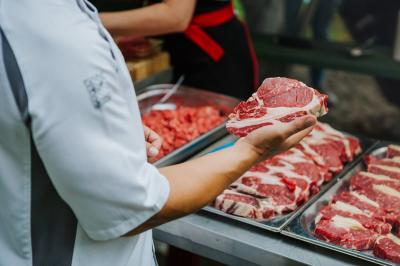
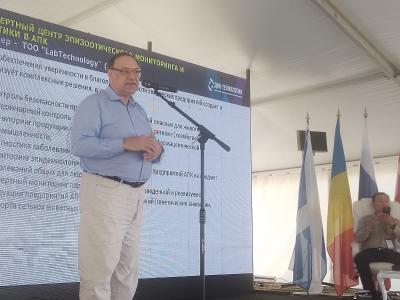

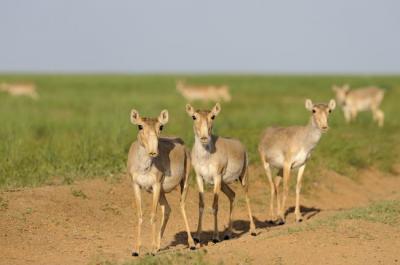
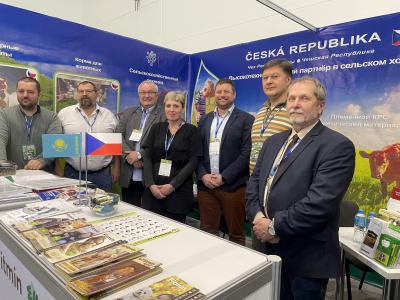

Обсуждение